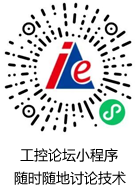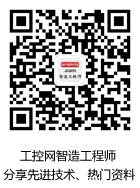CAN:简介(英文) 点击:2006 | 回复:0
发表于:2002-02-01 09:40:00
楼主
CAN General introduction
What"s CAN
The Attributes of CAN
What"s CAN ?
The Controller Area Network (CAN) doesn"t try to reach heaven like the Tower of Babel. CAN is a serial bus system especially suited for networking "intelligent" devices as well as sensors and actuators within a system or sub-system.
The Attributes of CAN
CAN is a serial bus system with multi-master capabilities, that is, all CAN nodes are able to transmit data and several CAN nodes can request the bus simultaneously. The serial bus system with real-time capabilities is the subject of the ISO 11898 international standard and covers the lowest two layers of the ISO/OSI reference model. In CAN networks there is no addressing of subscribers or stations in the conventional sense, but instead, prioritized messages are transmitted. A transmitter sends a message to all CAN nodes (broadcasting). Each node decides on the basis of the identifier received whether it should process the message or not. The identifier also determines the priority that the message enjoys in competition for bus access.
The relative simplicity of the CAN protocol means that very little cost and effort need to expended on personal training; the CAN chips interfaces make applications programming relatively simple. Introductory courses, function libraries, starter kits, host interfaces, I/O modules and tools are available from a variety of vendors permitting low-cost implementation of CAN networks.
Low-cost controller chips implementing the CAN data link layer protocol in silicon and permitting simple connection to microcontrollers have been available since 1989. Today there are more than about 50 CAN protocol controller chips from more than 15 manufacturers announced and available.
The use of CAN in most of European passenger cars and the decision by truck and off-road vehicle manufacturers for CAN guarantees the availability of CAN chips for more than 10 years. Other high volume markets, like domestic appliances and industrial control, also increase the CAN sales figures. Up to spring 1999 there are more than 150 million CAN nodes installed.
One of the outstanding features of the CAN protocol is its high transmission reliability. The CAN controller registers a stations error and evaluates it statistically in order to take appropriate measures. These may extend to disconnecting the CAN node producing the errors.
Each CAN message can transmit from 0 to 8 bytes of user information. Of course, you can transmit longer data information by using segmentation. The maximum transmission rate is specified as 1 Mbit/s. This value applies to networks up to 40 m. For longer distances the data rate must be reduced: for distances up to 500 m a speed of 125 kbit/s is possible, and for transmissions up to 1 km a data rate of 50 kbit/s is permitted.
热门招聘
相关主题
- 请问吴志扬老师
 [1691]
[1691] - 求助:远程数据采集
 [1830]
[1830] - rs485多机通信问题
 [15282]
[15282] - 网线能有多长
 [2044]
[2044] - 转载:现场总线智能仪表功能模...
 [3030]
[3030] - 西门子用的是哪种实时数据库...
 [1801]
[1801] - 综述:现场总线的发展趋势
 [3012]
[3012] - 分享一份 CP340 341 440 44...
 [1994]
[1994] - FX2N通訊控制多台三菱變頻器
 [1522]
[1522] - 现场总线技术及控制系统
 [4348]
[4348]

官方公众号

智造工程师
-

 客服
客服

-

 小程序
小程序

-

 公众号
公众号

















 工控网智造工程师好文精选
工控网智造工程师好文精选
